Are you feeling uncomfortable at work due to some unwanted behavior? It's crucial to address workplace harassment as it can significantly impact your mental health and job performance. In this article, we'll guide you on how to effectively report harassment, ensuring your concerns are heard and taken seriously. Join us as we explore the necessary steps to create a safer work environment for everyone.
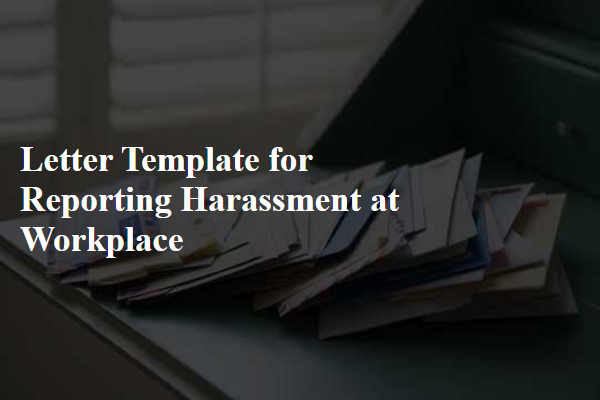
Clear Subject Line
Workplace harassment poses significant emotional and psychological challenges for employees. Complaints involving inappropriate behavior from colleagues or supervisors can create a hostile work environment, detracting from productivity and morale. Many organizations, such as Fortune 500 companies, have established reporting mechanisms to address incidents of harassment. According to the Equal Employment Opportunity Commission (EEOC), nearly 30,000 claims of workplace harassment were filed in 2020, highlighting the prevalence of this issue. Effective reporting requires clarity in documentation, including dates, locations, and detailed descriptions of the incidents occurring. Developing a clear subject line for the report, such as "Formal Harassment Complaint - [Your Name]" ensures immediate attention and proper categorization by human resources or management for swift action.
Personal Information
Harassment in the workplace can have serious consequences on employee wellbeing and productivity. In environments such as corporate offices or retail spaces, incidents of verbal abuse or unwanted physical contact can create a toxic atmosphere. Immediate reporting to HR departments is crucial, often involving detailed accounts of the harassment incidents, identifying the harasser, and documenting the dates, times, and locations of occurrences. Ensuring to include specific policies from employee handbooks that address harassment can strengthen the report. Emotional distress can lead to decreased job satisfaction and increased turnover rates, highlighting the importance of prompt and effective responses from management.
Detailed Description of the Incident
During a staff meeting on March 15, 2023, at the corporate office of XYZ Corporation located in downtown Chicago, repeated instances of harassment were observed involving employee Jane Doe. During the meeting, colleague John Smith made inappropriate comments regarding Jane's attire, specifically targeting her skirt and using suggestive language, which made her visibly uncomfortable. In addition, he invaded her personal space by leaning uncomfortably close while making these remarks. This behavior was not an isolated incident; it has been reported multiple times over the past month, creating a hostile work environment. Several coworkers, including Mary Johnson and David Lee, witnessed these interactions and expressed concern over John's conduct. The repetitive nature of this harassment has significantly affected Jane's emotional well-being and productivity at work. Immediate action is necessary to ensure a safe and respectful workplace for all employees at XYZ Corporation.
Witnesses and Evidence
Documenting workplace harassment requires a thorough gathering of evidence and witness accounts to support claims. Collect and list witness names, such as colleagues present during incidents, noting their positions and relationship to the harassment. Include specific dates and locations, referencing company facilities like Conference Room B and the break room on the second floor, where incidents may have occurred. Record types of evidence, including emails, texts, or recorded conversations, with timestamps and context when possible. Detail behavioral patterns, such as repeated unwelcome comments or physical proximity, referencing company policies on harassment. Accurate documentation can significantly impact investigations and ensure a comprehensive understanding of the situation.
Request for Action
Workplace harassment can significantly affect employee well-being and productivity. This serious issue often manifests through inappropriate comments, unwanted advances, or hostile behavior in professional environments such as offices, factories, or remote workspaces. Highlighting specific incidents with dates, locations, and individuals involved can establish a pattern of behavior that warrants attention. Organizations are responsible for creating safe workplace environments, which includes implementing policies and procedures for reporting harassment, such as anonymous hotlines or HR consultations. Seeking immediate action can prevent further incidents, protect affected individuals, and uphold workplace integrity.

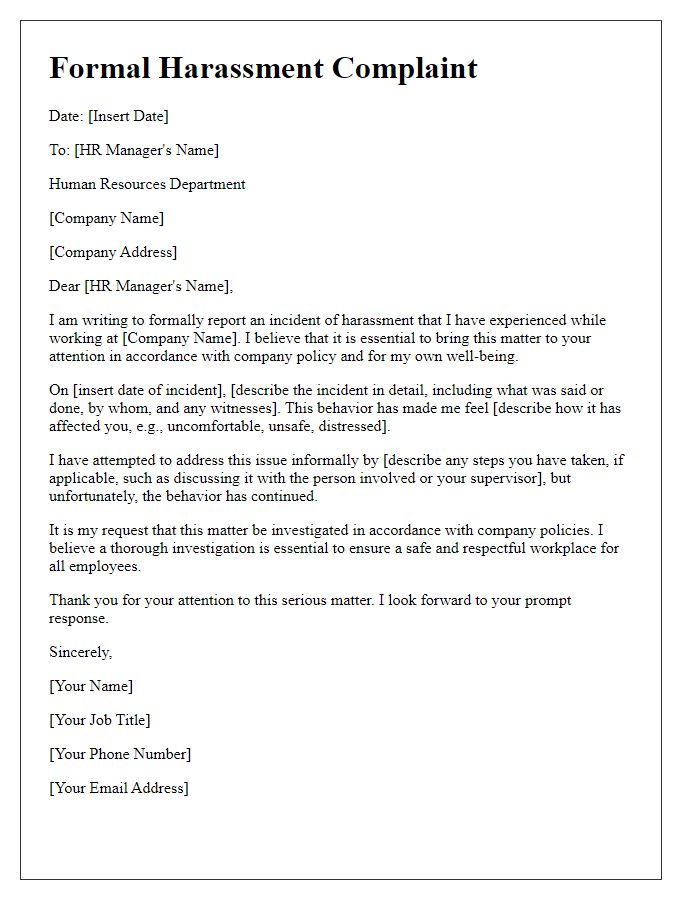
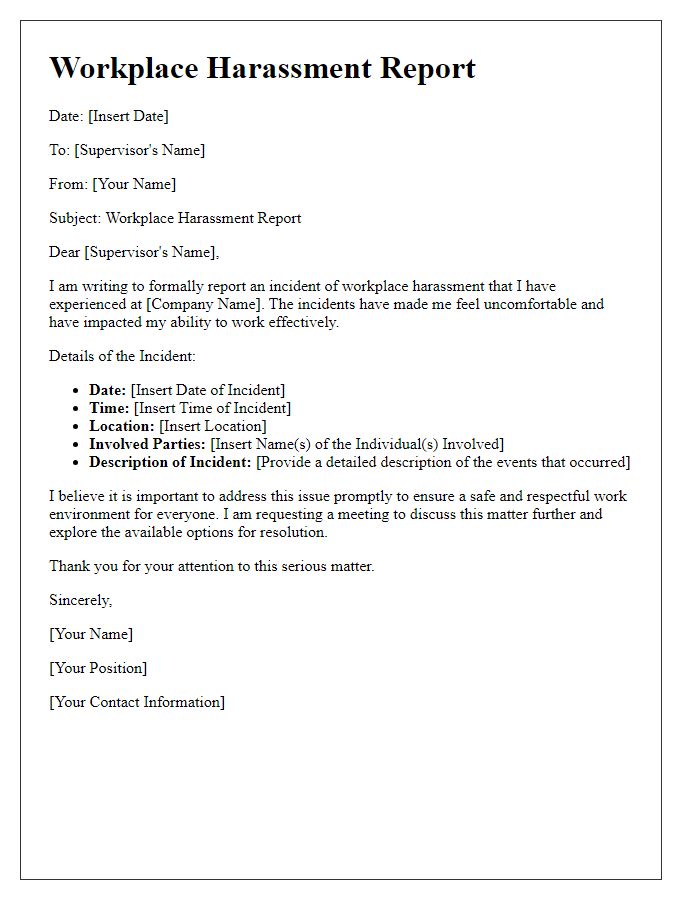

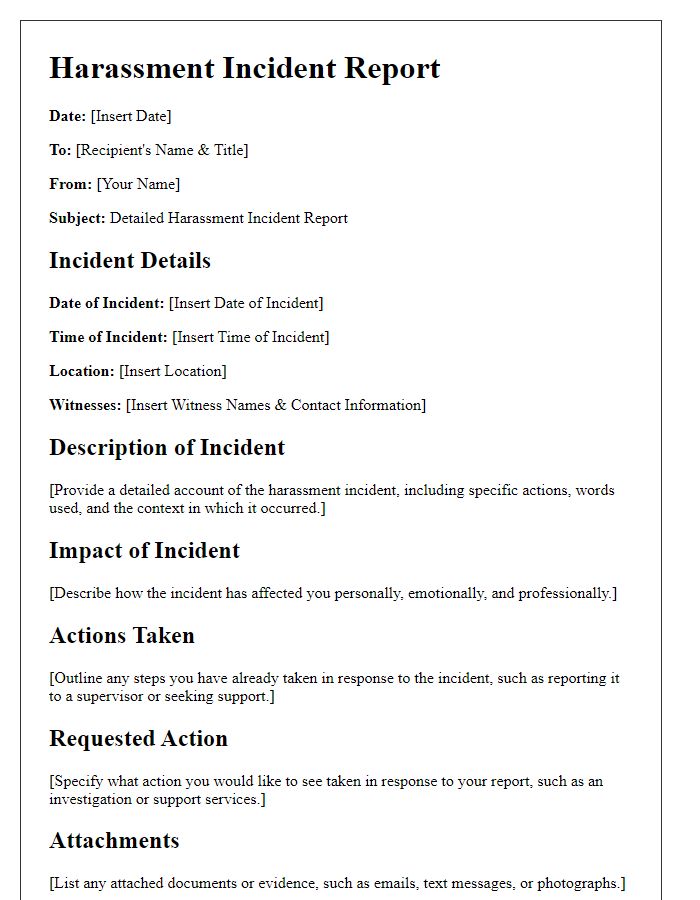
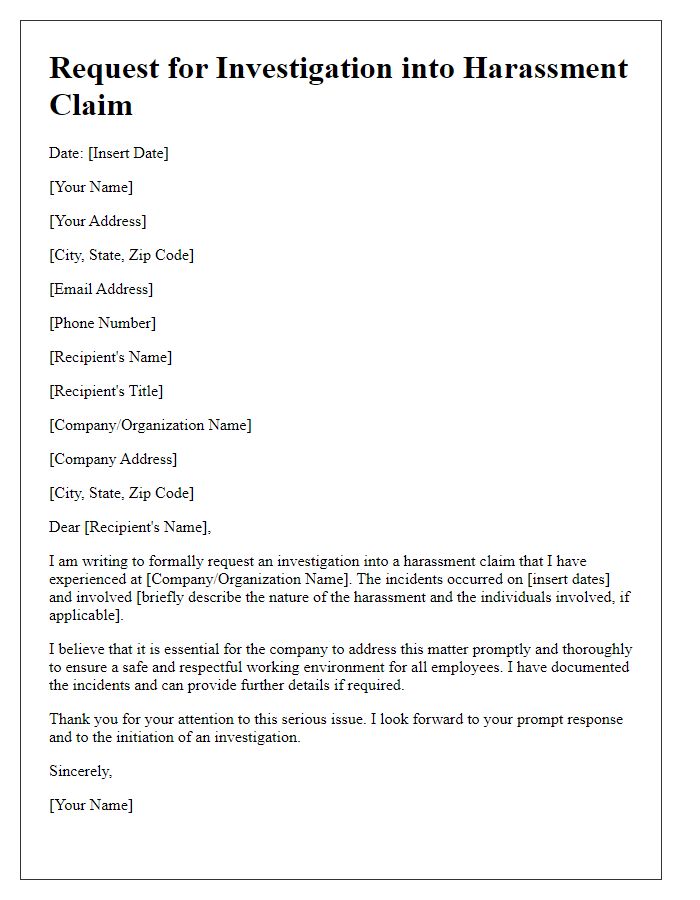
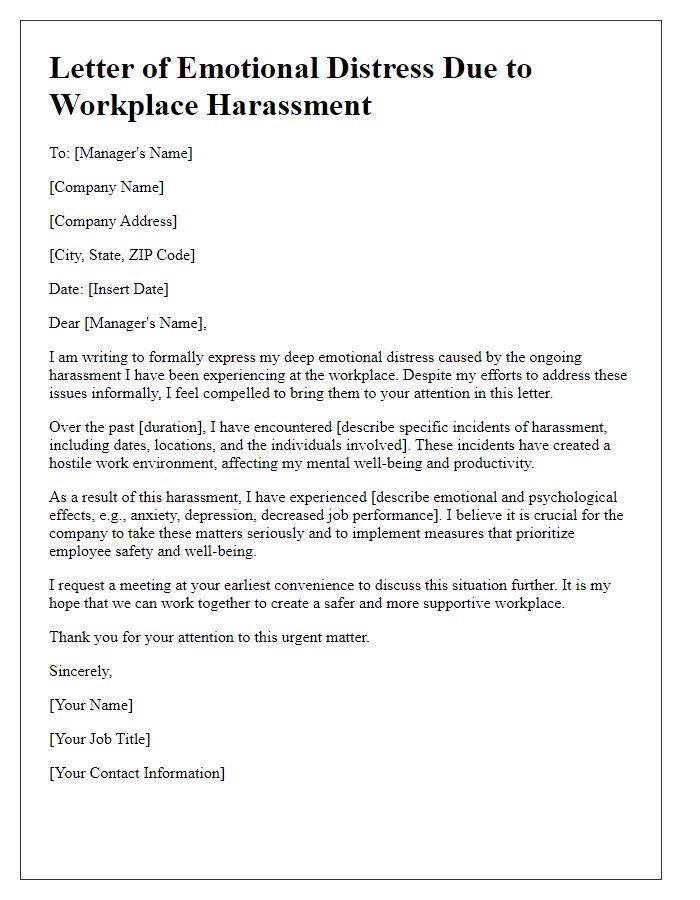
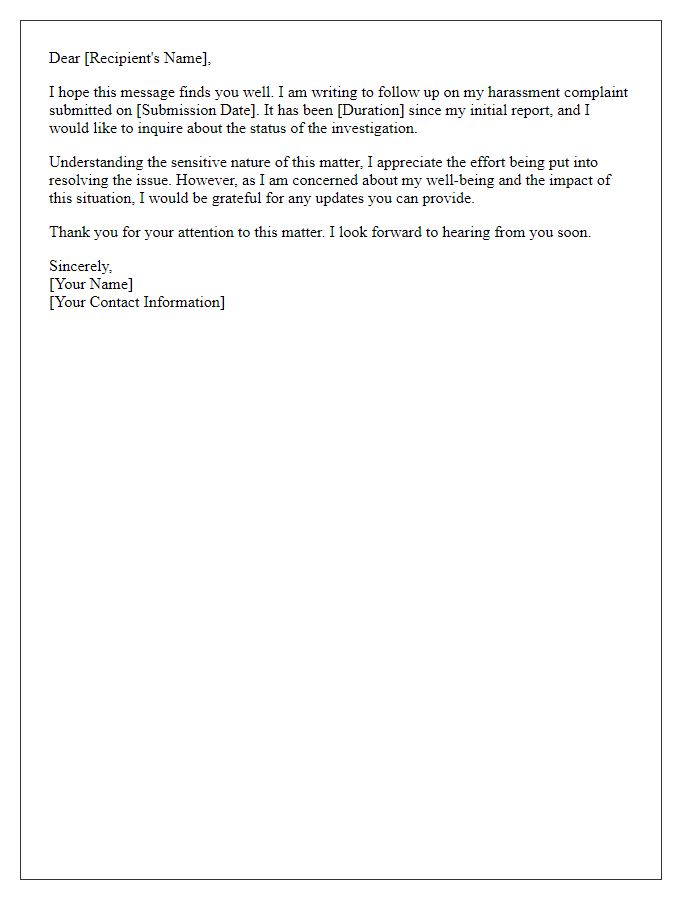
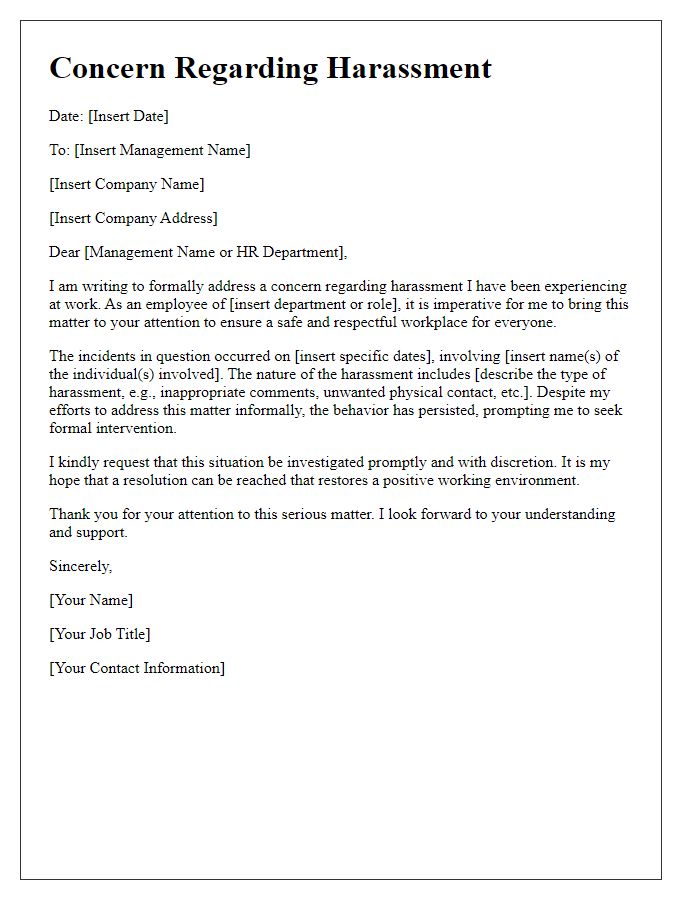
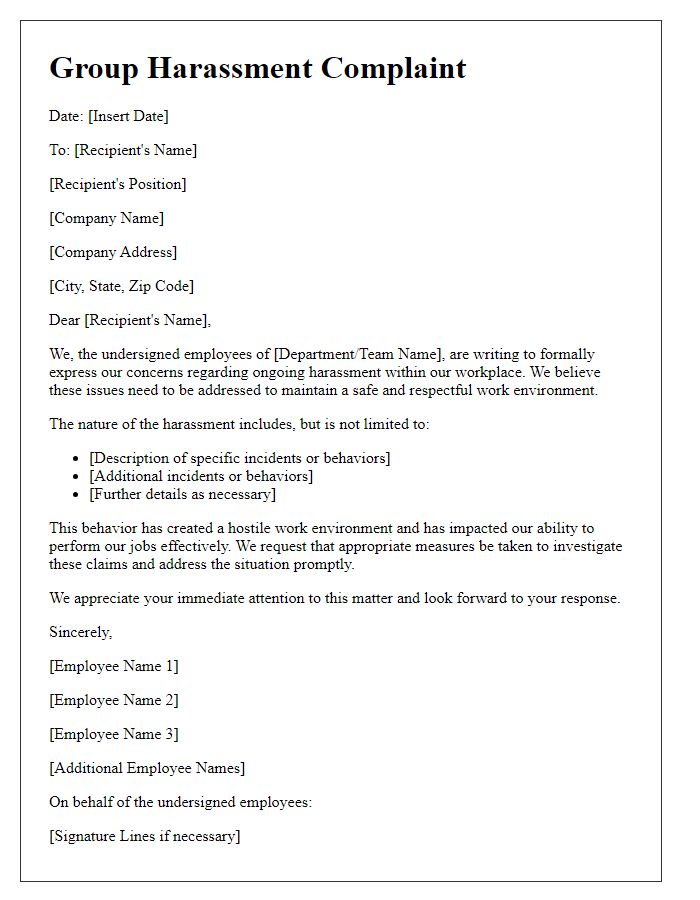
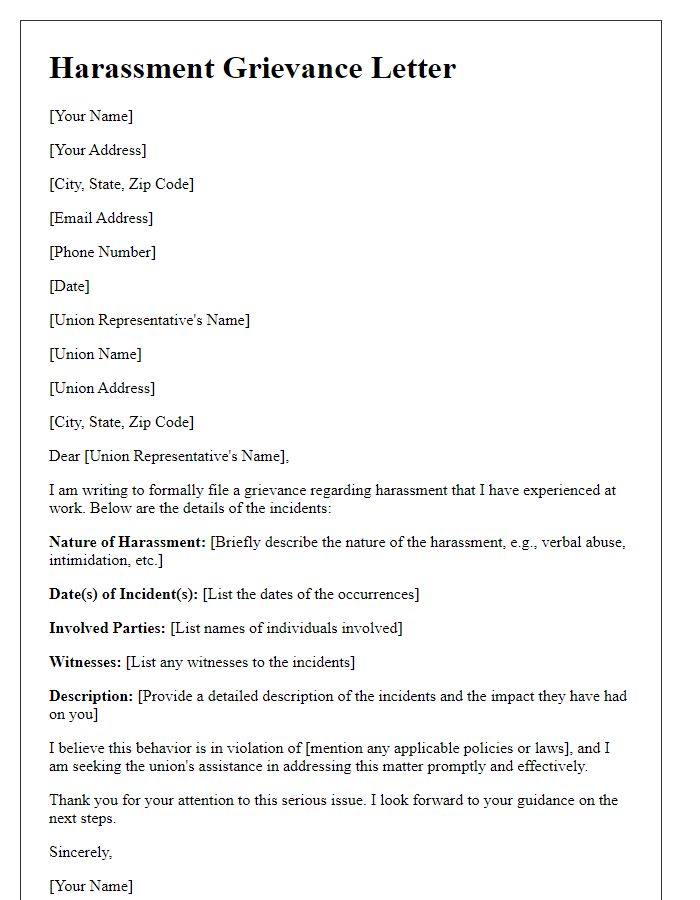


Comments